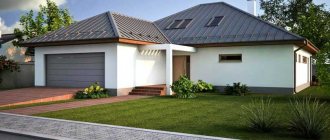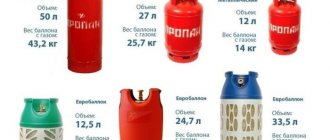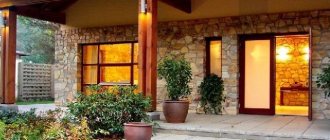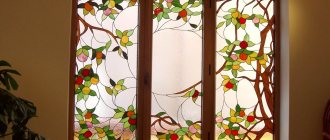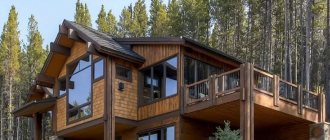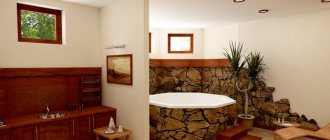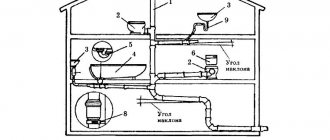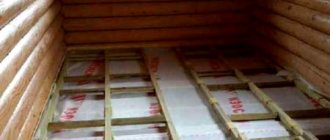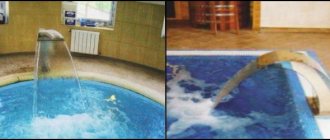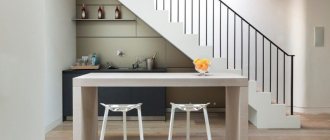When the snow turns white outside the window or the dank gray sky frowns, watering people with its rainy tears, the lack of something bright and summer is especially acute. For example, lush green plants or colorful fragrant flowers. It has long been known that the green “residents” of our homes cope well with the human blues, and they also clean the air in the room. Therefore, a winter garden can be an excellent solution. In a private house, it is much easier to arrange it due to the large spatial possibilities. Where to start, what materials, plants and style to choose - you will learn these and other important aspects from this article.
Winter garden in a private house - how to arrange it?
Greenhouse, winter garden, greenhouse?
The first winter gardens were created by the ancient Egyptians: the richest and most noble of them installed large flowerpots with greenery in their palaces. Over time, the fashion for maintaining a “green oasis” in a residential area appeared among the French and British in the 19th century, and then spread throughout the world. Today, a winter garden in a private house is not uncommon. However, it is important to understand what exactly you are planning to create in your home: a greenhouse, a greenhouse or a real winter garden.
Distinctive features of a winter garden
Table 1. Difference between a winter garden and a greenhouse.
| Design name | Peculiarities |
| Greenhouse | It is placed on the roof of the house or separately from it. Sometimes it may be adjacent to housing. Created for breeding and cultivating fruits, vegetables and flowers, both local and “overseas”. For a greenhouse, it is important to create special conditions, an ecosystem for the comfortable growth of crops. |
| Greenhouse | A mini-greenhouse located separately from the home. Used for growing fruits and vegetables or heat-loving plants. Plant comfort is a priority. Externally, the building is not very attractive, lacks decorations, and is quite budget-friendly. |
| Winter Garden | Most often they are attached to housing and designed in advance. Plants are kept and grown inside, but they are created for people (relaxation, receiving guests). Based on this, the design should have an attractive appearance and be functional inside. |
Glazing
Glasses that should be used for a winter garden:
- glass unit;
- energy saving;
- reinforced;
- strained glass;
- sun protection;
- triplex;
- colored in mass.
In addition to providing the winter garden area with natural street lighting, the glass must also protect the area from snow, rain and wind.
Proper glazing protects the garden owner from problems with maintaining temperature and humidity Source stroyfora.ru
In addition, glass must have the following functions:
- Soundproofing.
- Thermal insulation.
- Aesthetics (beautiful appearance).
- Protection from the external environment.
To meet such requirements, special types of glass have been created. To give a beautiful and aesthetic appearance, you can purchase painted, laminated and hardened materials. For thermal insulation, it is better to buy energy-saving ones. And reinforced glass can protect you from natural conditions.
Materials
When choosing materials for glazing, you need to proceed from the following parameters: sound insulation of the garden, warmth and the amount of natural light required. The modern construction market offers a large number of translucent materials. The main ones are discussed below.
Strained glass
The most expensive way is to fill the openings with sheets of single tempered glass. However, it cannot provide the necessary thermal insulation and does not store heat. Consequently, winters will be cool and summers will be too hot for plants. Although it is placed in a winter garden in a private house, it is more suitable for a veranda.
Double-glazed windows are the most profitable option if you want low energy consumption costs. Inside the double-glazed windows there is an inert gas with low heat transfer. Different glasses are used in their production. There is a choice of: glazed, with increased security, energy saving, soundproof and shockproof.
Double-glazed windows
Glass types are:
- mirrored;
- transparent;
- colored in mass.
Need to know! Light penetrating through painted glass changes shade. Therefore, the color scheme of the interior may be slightly distorted.
For ease of use, we suggest paying attention to self-cleaning samples. They “work” in the following way: when dirt gets on the glass, it decomposes due to light, and after a while it is washed off on its own during rain. They practically do not need to be removed and cleaned. But when the design has storm drains, there is no point in self-cleaning glass.
Polycarbonate
Polycarbonate is a material with a high light absorption coefficient. Compared to glass, it insulates heat better.
Polycarbonate is sold in 3 types:
- Dark.
- Transparent.
- Matte.
The latter is characterized by less light transmission. The first option is used in places where a lot of sun rays are directed at the winter garden in the house.
Polycarbonate Source oooarsenal.ru
There are three disadvantages of polycarbonate:
- Not as dense as glass.
- Gets dirty in a short time.
- When rarely exposed to sunlight, it turns green due to algae.
This material is produced in two versions: cellular and cast. The second has less heat loss due to its low thermal conductivity. Professionals advise using polycarbonate for roofs rather than walls because it is safer, lighter in weight and inexpensive.
Important! Polycarbonate may change in size due to prolonged exposure to air. As a result, it must not be mounted rigidly.
It is advisable to use special fastening systems and adhere to installation rules. Keeping technology in a positive context will affect the quality and design of the winter garden.
Types of winter garden structures
Before you start creating a home oasis, you need to think through many nuances. First, you need to decide on the type of structure. There are several of them.
- Buffer garden. This is a room adjacent to the house (often a veranda). It can be entered both from the home and from the yard. Typically, such a building is a connecting link between the street and the house; it has a rectangular or square shape (it can also be corner). They are used not only as a resting place, but also as a hallway or terrace. The advantage of this design is the ease of creation: communications, heating and electricity are easy to install from the house, the building is easy to maintain. The downside is the lack of ventilation, sudden temperature changes (at night in the buffer garden it is much colder), not every plant can survive there.
There is an entrance to the buffer garden both from the street and from the house - Residential garden. A great option for green lovers. This is a full-fledged living space in which you can place a dining room, living room, and recreation area. In such a garden it is comfortable for both plants and people. You can create a residential garden by planning it in advance (if the house is being built), or by placing it in the selected room. The main requirement is the presence of large window openings for sufficient daylight.
There can be a living room in the winter garden - Separate building . It is also called a greenhouse winter garden. If your plot is large, you can afford to put a spacious winter garden on it at a distance from the house itself.
It is important that the place for construction is sunny. It is equipped with heat, light and running water. The greenhouse winter garden can be connected to the house and other areas of the site with beautiful paths. The option is not the easiest and very expensive.
Such a building will decorate the site and an excellent solution for landscape design.
Important: whatever type of structure, it must let in enough daylight for the flowers to grow healthy.
Fundamental Factors
The most basic factors in the functioning of your winter garden with a swimming pool are:
- Ventilation;
- Heating.
Without the stability of these two conditions, it will be impossible to maintain and grow plants, and without heating you yourself will not be able to jump into a transparent water surface. Therefore, these two systems must work smoothly. For the stability of their functioning, it is necessary to take into account:
- It is better to use combined heat sources - water and electric. It is better to place the electrical appliance in the center of the garden.
- It is advisable to lay the heating element (cable) along the edges of the roof to prevent freezing and icing.
- Water pipes must be insulated to avoid freezing in winter.
- Ventilation through windows, vents or hatches is good. But it is better if forced ventilation is also present. It can be provided through an air conditioner or a fan installed on the hood. Any ventilation units can be used. As you know, there are a lot of air fresheners with ionization, humidification or carbon filters that clean the air from dust and dirt.
IMPORTANT! The optimal temperature in the winter garden: during the day - +24, at night - around 14-15 degrees. The heating system can be integrated into the overall system of the house, or it can be autonomous.
Once you decide on heating and ventilation systems, then start purchasing the necessary materials and tools.
Choosing a place
If you are planning to place the structure of the future winter garden in a house extension, it will be very important to decide on which side it is best to do this: southern, northern, eastern or western. Each option has certain pros and cons.
- North . The location is not the best, since the garden will quickly release the accumulated heat to the outside. If there is no option to choose the other side, you need to take care of a good heating system.
- South . The good side is during the cold season, when daylight hours are short and there is little sun. On warm summer days, the plants will be too hot and stuffy there, the owner will have to water them more often, provide shading and access to fresh air.
- East . This is the most successful location option: in the first half of the day the plants will be provided with light and warmth, and in the remaining time the flowers will “rest” from the sun. Thus, overheating of crops will be excluded.
- West . The solution is also suitable: the heat accumulated during the day is retained throughout the night. This is good for winter, but in summer you will have to provide additional ventilation and good watering.
Cardinal directions for the winter garden
For both health and soul
Making a winter garden with a swimming pool on your dacha or garden plot means combining business with pleasure. Everyone wants to enjoy green, fragrant, flowering plants not only in the summer, but all year round. When there is a monochromatic winter landscape around, plunging into the atmosphere of summer is good for both health and mood in general. And if there is a swimming pool nearby all year round, in which you can relieve stress after a hard day, then this is the ultimate dream. And swimming and enjoying green flowers during blizzards and cold is the key to health. Longevity and a positive attitude. Are you planning to combine a winter garden with a swimming pool? Find out from our article how to build a winter garden with a swimming pool yourself.
Choosing a form
At the stage of planning a winter garden, it is very important to decide on the optimal form of construction for this room. A separate building can be anything: a sphere, a hemisphere, a cylinder, a cube. However, it is usually rarely installed separately, due to the high price and complexity of implementation.
Most often, a winter garden is part of a living space, in which case its shape also differs. There may be several options:
- a rectangular extension with a pitched roof (the simplest and most popular);
- a structure adjacent to the outer corner of a residential building;
- quarter-polygon (extension to the inner corner of the house);
- structure with a combined roof;
- bay window design;
- L-shaped extension with a gable roof.
Types of structures
Please note: you can design the building the way you need it.
Finishing
We are ready to offer you various finishing options. Here are the most popular ones:
Composite stone
It is a polymer material that is resistant to sunlight and chemicals. Has low water absorption. You can choose a wood option and then your pool will sparkle with new colors and become a real addition to a wooden house.
A natural stone
This is a slightly processed fragment of natural stone. If you choose a natural border stone, then the design is individual, as it was created by nature, and therefore will depend on the area where it was taken.
concrete stone
Concrete stone is concrete coated with fibrin (a compound designed to prevent cracks from forming in concrete). Thanks to special processing of the material, concrete curb stone has exceptional water-repellent properties.
American
American is a universal solution for a pool of any shape. The peculiarity of this curb stone is that it perfectly follows all the curves of the pool.
Stone and mosaic
This is an unusual duet that will be an ideal addition to the interior of any home. The border stone and mosaic will create a sunny mood, and your wooden house with such a pool will become a place where friends and family will gather every weekend.
Selecting materials
The inside of the winter garden should be comfortable not only for people, but also for plants. This determines the specific choice of materials for walls and roofs: these structural elements should provide your crops with maximum access to light. Based on this, glass, polycarbonate, double-glazed windows, and sometimes plexiglass are most often used when finishing walls and roof coverings. Let's look at the advantages and disadvantages of each material.
Glass
This type of cladding is the most used. Glass is so popular due to a number of significant advantages:
- high load-bearing capacity;
- aesthetics;
- light transmittance (98%);
- fast heat transfer.
These positive properties do not exclude some disadvantages. Glass is a fragile, quite expensive and difficult to work material.
Glass cladding looks impressive
Polycarbonate
The most modern and technological solution, which is popular in the field of construction and finishing. It has many advantages:
- budget;
- easy to process;
- plastic (can be bent);
- moisture resistant;
- resistant to moisture, fungus, corrosion;
- easy.
Please note: polycarbonate has a top layer of protection that does not allow moisture to pass through. This makes it virtually invulnerable to precipitation.
Polycarbonate would be an ideal material if not for some disadvantages:
- low thermal efficiency (good heating will be needed);
- transmits less light than glass (88%).
Polycarbonate sheathing
Double-glazed windows
Today, when creating winter gardens, double-glazed windows have become more often used, despite their high cost and heavy weight. This popularity is due to their high light transmittance (like glass) and excellent heat retention. Also, if your budget allows, you can opt for energy-saving double-glazed windows: they will help significantly save heat.
Double-glazed windows
Plexiglas
As a rule, it is not used as an independent one. Suitable for side walls in combination with other materials. It has a significant disadvantage - it is heavy, which makes you think about a more durable frame.
Main stages of construction
A winter garden with a swimming pool is, as a rule, a glazed structure attached to the house or standing separately. The frame is made of plastic or aluminum. You can choose other construction materials. Let's start building the pool.
- Dig a pit for the pool;
- Dimensions – 20 cm larger than designed;
- Depth – from one and a half to 2.5 meters;
- Use a level and a plumb line - the bottom should be inclined towards the drainage hole or drain (slope - 4 cm per 1 meter);
- Fill the bottom with sand and tamp it down;
- We fill in a layer of gravel and tamp it down;
- Cover with two layers of roofing felt and reinforce with mastic;
- We concrete the bottom, begin to concrete the walls;
- We install formwork;
- Pour concrete;
- We wet the walls with a water-concrete solution;
- When concreting, leave holes for pipes, communications, drains, etc.;
- Construction of a foundation near the pool - taking into account the space for earthen areas - for planting plants;
- Construction of the basement of the winter garden itself;
- Installation of garden walls and roof;
- Interior finishing work.
Initially, it is better to start installation with frames located vertically, and install the base of the frame on them. Lay polycarbonate sheets in the gaps between the frame rafters; plastic caps can be used to secure them. In the internal space of these caps there are chambers with air, so these elements perform not only decorative tasks, but also the role of thermal insulation, eliminating the loss of internal heat. When installing the roof, you must make a kind of joint - a “snow pocket”. And don’t forget about the waterproofing system, for which you can make a reinforced aluminum gutter, which it is advisable to equip with cable heating. This will prevent the appearance of ice during the cold season.
Foundation, floor and walls of the structure
The very first stage of creating a winter garden is pouring the foundation of any durable structure, that is, the foundation.
Important: the winter garden room needs a foundation, since heavy pots with plants will create a huge load, and a structure without a foundation will simply sag.
The most convenient and widespread technology for pouring is the strip foundation technology. It is important to follow the basic steps here:
- Apply markings and dig a trench (depth - 50 cm, width - 10-15 cm).
Dig a trench - Install reinforcement (will strengthen the foundation).
- Place a mixture of gravel and sand at the bottom.
Install boards or special thermal insulation on the sides of the trench - Fill the hole with cement (“M-200”, “M-300”).
- Lay a layer of roofing felt (waterproofing) on top of the cement.
Pillow for strip foundation - Wait for the mass to completely harden (15 days).
Attention: please note that pouring and drying the foundation will take 17-20 days.
Next you need to decide on the floor. Initially it is poured with concrete, but after complete hardening it needs to be covered with something. There are several options here:
- ceramic tiles;
- natural stone;
- fake diamond;
- porcelain stoneware;
- boards (rarely).
Based on preferences and budget, everyone decides for themselves what exactly to cover the floor in their winter garden.
Natural stone flooring is beautiful and effective
About the benefits of coniferous plants
Photo from the archive of Polina Shestel
By selecting conifers, you can create a low-maintenance garden, when you don’t have to cover/shade anything for the winter, remove leaves, treat diseases and pests (or do it minimally), fertilize and even water. We water conifers only in the first year of planting. Mature plants cope well without watering. That is, such landscaping is suitable if a person rarely comes to the site. There is a growing demand among our customers for just such gardens, because many come to their country houses for only a few weeks, or less often for the whole summer.
- 10 attractive coniferous plants that definitely won’t freeze in winter
What winter-hardy coniferous plants can be used to decorate a flower garden in the middle zone?
Frame and roof
In appearance, a winter garden may look fragile due to its transparency and even some airiness. However, it’s good if she only seems like one. To withstand winds, snowfalls and the scorching sun, the structure must be strong and reliable. For this, it is also important to choose a good frame material. There are many options, let's look at their brief descriptions.
Table 2. Types of frame materials.
| Material name | Characteristic |
| Aluminum profile | The most popular version of the frame has many advantages: - lightweight; - durable; - durable; - not subject to rust. The main disadvantage of an aluminum profile is its high throughput (it does not retain heat), which means you will have to take care of thermal protection. |
| Tree | Wood is often combined with brick, but timber is not a very popular material because: - it can rot; - changes shape and size with temperature fluctuations; - afraid of moisture; - expensive and complicated. If you choose durable and high-quality wood, the building will be durable, but its cost will increase significantly. |
| Steel | An undeniable advantage of a steel frame is its high strength and durability. But the disadvantages are also significant: - very heavy weight; - high price; - susceptible to corrosion. |
| Metal-plastic | Good material, characterized by such advantages as: - resistance to UV rays; — excellent thermal insulation; — high noise insulation. |
| Brick | Brick is used quite often to create a frame base. Pros: - strength; — moisture resistance; — ease of installation; - durability. However, the material is heavy and quite expensive. |
Aluminum profile frame is very popular.
Next, everything will depend on the selected materials and the type of future structure. For fastening, you can use a welding machine (if the frame is made of steel), a screwdriver, a drill, etc. Parts can be fastened with nails, dowels, and self-tapping screws.
After the frame is made, the sheathing begins. The material from which the structure will be sheathed will determine the pitch between the frame guides.
Please note: do not forget about the joints between the walls of the home and the home “oasis” - they need to be treated with insulating foam.
If we talk about the roof of the future winter garden, it is also important to choose the right material. Of all the above, glass is the least suitable: it may not withstand the weight of snow that falls in winter. The best option is polycarbonate or double-glazed windows (2 or 3 chamber).
Attention: do not choose double-glazed windows with a glass thickness of more than 5 mm, since such material is too heavy for the roof.
When arranging a roof, give preference to a configuration with a slope.
A sloped roof will be an excellent solution to prevent precipitation from accumulating on the roof surface and preventing the penetration of light.
Video - Winter garden assembly process
Must have in stock
In any country house, you have already bought almost all the tools necessary for arranging a house, a round and rectangular greenhouse, and a bathhouse. So just check availability:
- Trowel;
- Level and plumb;
- Shovels;
- Construction tape;
- Sharp knife;
- Hacksaws;
- Containers for mixing concrete;
- Construction mixer.
In accordance with the design and size of your future structure, you must also purchase the materials from which you will build the garden of your dreams: concrete, sand, roofing felt, mastic, reinforcement, rubber, tiles or other material, boards, wire, sealant, bars, mortar plaster, etc.
Choosing a heating system
Sunlight is the source of life and heat for plants. However, in cold weather, for their existence and growth, as well as for the comfortable stay of people in the winter garden, it is necessary to install an optimal heating system. The choice will depend on the following factors:
- room area;
- plant species;
- frequency of people being in the room.
The assortment of modern stores allows you to make the right choice from many existing options.
Operating principle of an electric convector
Table 3. Types of heating devices and systems.
| Name | Device properties |
| Electric heaters | — easy to install; - mobile; — quickly heats the air; - available; — high electricity consumption; - dry the air. |
| Split systems | — uniform and fast heating of the room; - ability to regulate temperature; — do not affect air humidity; - high price; — electricity costs; - not suitable for northern regions. |
| Water heating (from the house heating system) | — temperature stability; — minimal costs; — identical microclimate; - installation difficulties (it is better to do this at the initial stage, when the house is still under construction). |
| Warm floor | — uniform heating; — convenience and comfort; — prevent freezing of the floor and walls; - high price; — complexity of repair; - Difficult to install. |
| Ural Federal District | — heat the room evenly and quickly; — it is possible to adjust the temperature; - will not affect air humidity; - are expensive; - not suitable for large rooms. |
| Heating from the stove | - low cost; — uneven heat distribution; — danger of fire (in the absence of a person in the room). |
Heating systems can be easily combined with each other
Choosing a ventilation system
Any room needs regular ventilation, and the winter garden needs constant ventilation, because the green “residents” of your cozy corner need fresh air. He can get from the street inside (and vice versa) in two ways.
- Natural . Simply put, windows need to be provided with vents and transoms. This is a cheap option, there is little noise from such ventilation, and by opening and closing the holes you can easily regulate the air flow. However, such a system will fail in the warm season, when the temperature difference is minimal.
- Mechanical . Involves the use of technology, such as fans or more complex systems. They will create an excellent microclimate, but noise may interfere with your relaxation. It is also worth considering installation costs and electricity bills.
Ventilation diagram in a house with a winter garden
Climatic conditions
So, the construction of the garden room has been completed, all that remains is to connect communications to the building and plant the plants. In order for flowers and plantings to feel comfortable, it is necessary to take care of creating an ideal microclimate.
When a winter garden is located in a house, it is much easier to monitor the climate in it, and it is, therefore, as close to comfortable as possible.
If the corner of nature is located outside the living space, then in this case it is necessary to take care of normalizing the following parameters:
- Air parameters.
- Light.
- Air exchange.
- Heating.
Choosing lighting
The walls and roof of the winter garden are sheathed with transparent material, which means there should be no problems with lighting. Still, plants often need additional light. There are a large number of sources of artificial lighting: mercury, sodium, fluorescent, LED, metal halide, phyto-lamps and incandescent lamps. Of these, fluorescent ones are the most popular because they save energy, provide excellent illumination and have low heat dissipation.
Phyto-lamps are especially good: they have a positive effect on photosynthesis. The downside of this option is its price.
Think about how you can protect your flowers: curtains, blinds, awnings, awnings
Don’t forget that too much light is also bad.
Protecting the winter garden from strong solar radiation
When planning garden lighting, you should take into account the opposite effect of its overabundance. In summer there is too much light, and in order to prevent its harmful effects, the garden must be protected. Measures to protect the winter garden can be divided into two types:
- internal protection – blocks up to 40% of light
. These are curtains and blinds made of various materials. Typically fabric, plastic, bamboo or aluminum are used. The latter should not be used, because the metal heats up quickly and gives off heat for a long time. This affects the overall temperature regime. In addition, they make noise and vibrate when the fan is running.
- external protection – blocks 70-90% of light
. These are awnings, awnings, for the production of which a special fabric with a reflective surface is used. External protection is preferable because the wall material does not heat up and the overall temperature in the garden does not increase.
Selecting and combining plants
When choosing plants, you will have to rely not only on your own preferences and taste. It is very important that the cultures are combined with each other, because they will be in the same room.
According to zones and conditions, plants are divided into:
- tropics;
- subtropics;
- desert;
- humid tropics.
It is unlikely that you will be able to combine flowers from different climatic zones, so make sure that the requirements are approximately the same.
Do not forget about the location of pots with plants: the sunny side is an excellent place for light-loving crops
From the history
Previously, a house with a swimming pool was considered an indicator of luxury and only wealthy people could have it. Not everyone knows, but the history of the appearance of swimming pools goes back far into history. It is known that the first buildings began to be built in the houses of only wealthy harem owners in the East, or wealthy Greeks and Romans in the West. For the rest of the city residents, public baths and houses of the same type were built, both of which did not have swimming pools on the territory. Quite a bit of time has passed and today anyone can have a wooden house or a bath house with a swimming pool. The only thing left to do is choose a trusted company that is ready to bring any idea to life.
We have more than 20 years of experience in designing and building houses and bathhouses with swimming pools. Hundreds of completed projects and a lot of satisfied customers. Call us and we will be happy to advise you.
About watering plants
Is your garden small and compact? Then, in order to water all the flowers, you will need a basic watering can, a spray bottle and a schedule for adding water. But in the case of a larger room, watering can become a problem and take a lot of effort and time. An excellent solution is a drip system: pre-installed hoses will ensure a regular flow of liquid into the substrate, and special sensors will be responsible for the humidity level.
For additional humidity and beauty, you can install an artificial pond in the garden.
Garden design: zoning and style
Upon completion of construction and installation work, it becomes necessary to plan the interior arrangement of the premises. This is where such an effective technique as zoning comes to the rescue, i.e. dividing the winter garden space into functional zones. There are several of them.
- Decorative . This is a place reserved for plants and various decorative elements (fountain, aquarium, figurines, etc.).
- Service . Fertilizers, equipment, and other things useful in caring for flowers will be stored here.
- Recreational – recreation area. For its arrangement, sofas, armchairs, hammocks and tables are used.
- Communicative . Such a zone exists in large rooms. These are places for alleys, paths, paths that will connect all other areas with each other.
Zoning a winter garden
When it comes to decorating a garden in any style, you should also start from your own tastes. The common features of a particular style will help create an aesthetically attractive cozy corner.
- Classic. This is the predominance of symmetry, pompous figurines in the form of living creatures, people, fountains in the form of geometric figures.
Winter garden in a classic style - High tech. A winter garden in this style is characterized by a combination of metal, concrete and plants, laconic and precise lines.
High-tech style - Eco style. Naturalness, naturalness. Select plants that are typical for your region. Figuratively speaking, this is a piece of the garden “under the hood” - this should be the impression of your winter garden.
Eco style - Country. Similar to the previous style. These are natural decorations (vines, stumps, clay pots) and the simplest possible local crops.
Country - Japanese style. Very beautiful, with his own philosophy. The main elements are stones, earth/wood, water.
Winter garden in Japanese style
What to do to make a coniferous plant overwinter easily
Photo from the archive of Polina Shestel
1. A good wintering directly depends on the preparation of plants for the cold. Autumn is often dry, so it is advisable to do moisture-recharging irrigation, because the vegetative process in conifers does not stop even in winter, it only slows down, and in the process of photosynthesis one of the main elements is water.
Photo from the archive of Polina Shestel
2. When the first heavy snow falls, it needs to be shaken off the conifers (with a broom, with your hands, whichever is more convenient). It is especially important to do this with standard forms.
In the first years, it is advisable to place a metal pin next to the standard ones (slightly higher than the plant itself) so that the snow is cut through it and does not linger in the crown.
3. When clearing the snow on the site, we compact it under the plants, do not let them fall apart, as if propping them up with snow.
Photo from the archive of Polina Shestel
Coniferous plants (especially thuja) suffer greatly from animal urine. You can avoid the problem by planting plants in such a way as to make it difficult for animals to access them (limit them to stones, other plants, etc.). If, nevertheless, the plants are damaged, then we wash them with plenty of water, water them, or treat them with Epin or Zircon (phytostimulants). We clean and trim the blackened branches.
Details you shouldn't forget
In conclusion, we will give some tips that may be useful in planning and arranging a home “oasis”:
- calculate the approximate cost of the planned structure;
- determine the location of outlets in advance;
- choose natural materials for furniture (wicker, rattan, wood);
- plan methods and methods of planting;
- take care of fertilizers;
- Shade the garden in hot weather.
A mirror will help to visually enlarge the space of a small room.
Master Class. Example of winter garden construction
So, now you know about all the winter garden systems and its internal structure, and therefore you can proceed directly to the construction process.
Important when building a winter garden
Step one . First, determine which side of the house the building will be located on. It is better to give preference to the western or eastern wall. Also, the winter garden can be located from the south, but in this case a serious ventilation system will be needed to maintain the optimal temperature inside in the summer.
Step two . The construction site is cleared of plants, stones and debris. After this, the foundation is poured - a shallow shallow foundation.
Step three . The lower frame frame is mounted on the base, and there must be a waterproofing layer on it. The position of the lower harness is controlled using a tape measure, stretched ropes and a building level.
Installation of the bottom trim
Step four . Horizontal/vertical elements of the future frame are mounted, which will serve as the walls of the garden. It is important that all connections are secure.
Installation of vertical frame elements
Installation of horizontal frame elements
Step five . Next, the top frame is mounted and the roof beams are installed. It is important that all wooden elements used are pre-treated with an antiseptic impregnation.
Installation of the top trim
Installing roof beams
Step six . Rubber sealing profiles are prepared and glazing of the structure begins. Sheathing elements are transferred using vacuum suction cups - this is not only safe, but also convenient.
Glazing of the winter garden
Glazing process
Step seven . On the outside, the seals are covered with an aluminum profile, which is necessary for protection from moisture and sunlight.
Glazing is almost complete
Installation of aluminum profiles
Step eight . The cornice profile is installed. It is advisable to additionally equip it with a drain.
It is advisable to supplement the cornice profile with a drain
Step nine . When the construction of the garden is completed, water and electricity are supplied to it, and irrigation and ventilation systems are equipped. Places for plants are being marked out and the interior decoration of the winter garden is being carried out.
On a note! As a result, you will get a comfortable and beautiful room where you can spend your free time surrounded by your favorite plants throughout the year.
Best materials
The most proven and reliable material for constructing a winter garden is glass of various types:
- Artistic;
- Matte;
- Stained glass.
But recently it has been replaced by a more durable and flexible material - cellular polycarbonate. This material is lighter than glass and can withstand loads of up to 150 kg/sq.m. This is important in areas where there is a lot of precipitation, especially in the form of snow. Polycarbonate is frost-resistant and can withstand temperatures down to -30 degrees Celsius.
Advantages of cellular polycarbonate:
- Does not change physical quality up to +100 degrees Celsius;
- Good thermal insulation properties;
- High level of fire safety;
- Environmental friendliness;
- Reliability in operation.
The cost of cellular polycarbonate varies from 1,550 to 41,570 rubles. per sheet.

